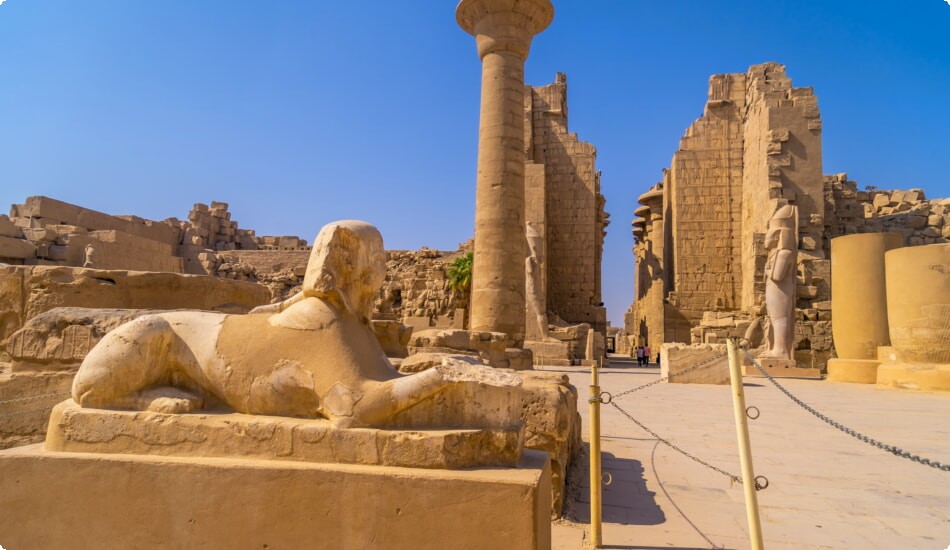
Nestled by the east bank of the Nile River, Luxor emerges like a mirage, its ancient temples and statues casting their eternal shadows. As the world hurtles forward, Luxor stands as a steadfast reminder of our collective past. For those who find themselves in the stunning beach town of Hurghada, a Luxor Trip from Hurghada is the bridge that connects the serenity of the Red Sea to the mystique of ancient Egypt.
Luxor – A Time Capsule of Ancient Egypt
As you approach Luxor, the cacophony of modern life starts to fade, replaced by the whispers of the millennia gone by. Known as 'Thebes' during its heyday, Luxor was not just a city; it was a beacon of culture, religion, and politics. For almost 400 years during the New Kingdom era, this was the seat of power, the place where pharaohs made decisions that shaped the course of ancient Egyptian history.
Picture vast processions of priests, the rhythmic beats of ceremonial drums, and the fragrance of incense wafting through the streets. Thebes was a city of splendor, where monumental temples met the azure sky and tombs were intricately decorated to honor the dead. It was a place of grandeur, a capital where both man and deity converged.
Yet, what makes Thebes, now Luxor, particularly enthralling is not just its historical significance. It's the way the past seems to seep into the present. As you walk through its streets, you're retracing the steps of pharaohs and commoners alike, feeling the weight of their stories beneath your feet.
The Temple Trail – Walking with the Gods
The beauty of Luxor doesn't just lie in its history but in the tangible remnants of its glorious past. Every stone, column, and wall has a tale to tell, and as we embark on this temple trail, we'll hear the echoes of ancient worship and marvel at the architectural genius of the ancients.
Karnak Temple Complex:
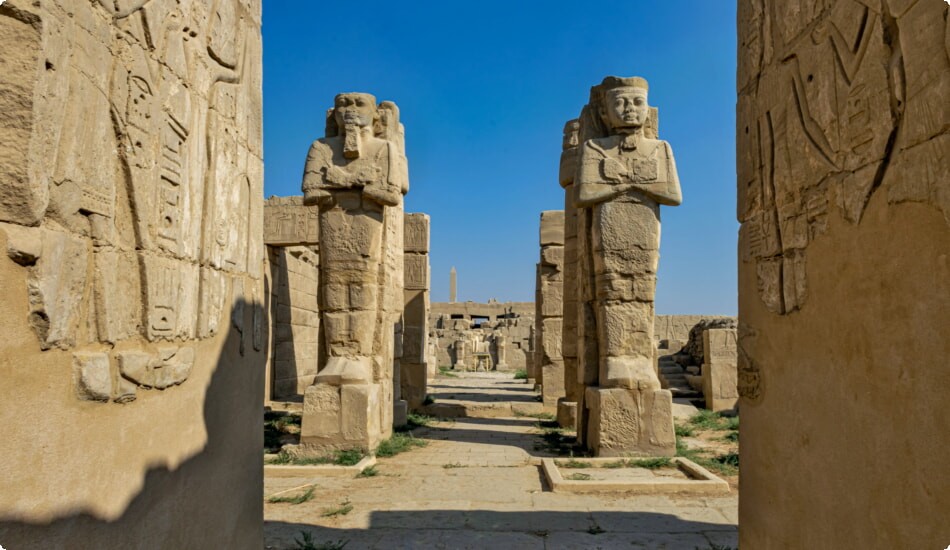
Perched on the northern end of Luxor, the Karnak Temple Complex is nothing short of an architectural marvel. Covering nearly 200 acres, it is not just a temple, but a city of temples. As you enter through the grand gateway, the first sight to greet you is the Avenue of Sphinxes, guarding the temple secrets since time immemorial.
The heart of the complex, the Great Hypostyle Hall, is a forest of gigantic columns, each intricately carved and towering above, creating a maze of shadows and light. With 134 columns spread out in 16 rows, you can't help but wonder about the hands that built this, and the ceremonies that took place under this vast roof.
Luxor Temple:
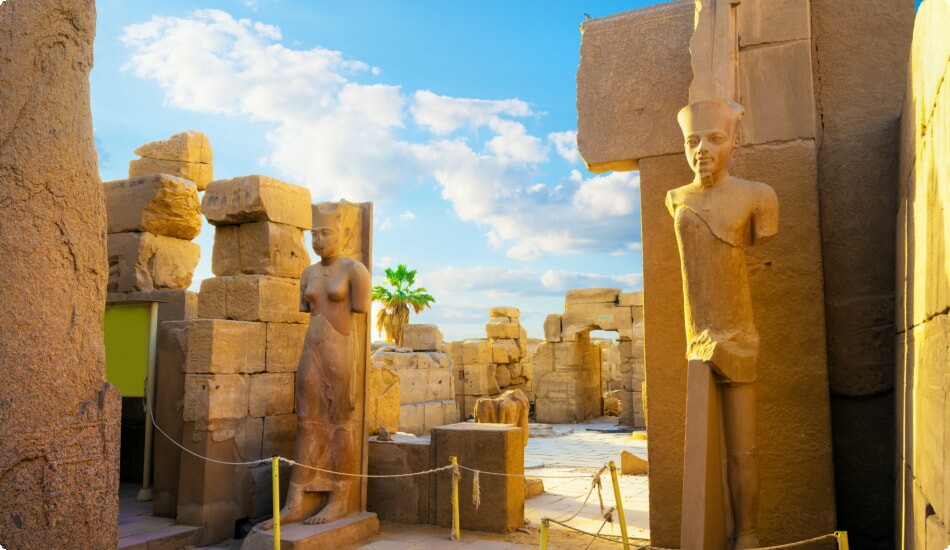
A more intimate affair compared to Karnak, Luxor Temple rests in the heart of the modern city. It might be smaller, but its significance is undiminished. Initially connected to Karnak by the Avenue of Sphinxes, this temple was the stage for the grand Opet festival, an event that symbolized the union of Thebes’ two main deities, Amun of Karnak and Mut of Luxor. As day gives way to night, the temple is bathed in golden light, offering a mesmerizing view of its statues and carvings.
Valley of the Kings – Resting Place of Pharaohs
Beyond the grand temples lies a realm of quiet reflection, a place where the sun meets the rugged mountains and where pharaohs hoped to meet eternity.
The Mystique of the Tombs:
Nestled in the heart of barren hills, the Valley of the Kings remains a paradox - a place of death teeming with life stories. Over 60 tombs burrow deep into these hills, each a resting place for the mighty pharaohs and their retinues. The most iconic among them? The tomb of the young King Tutankhamun, discovered almost intact in 1922. With its dazzling treasures now in Cairo's Egyptian Museum, the tomb still retains its aura, a silent space reflecting the short-lived reign of its inhabitant.
Must-Visit Tombs:
While Tutankhamun's tomb garners much attention, the valley hides other gems. The tombs of Ramses IV, Seti I, and Thutmose III offer intricate wall paintings and hieroglyphs, capturing glimpses of their lives, beliefs, and journeys to the afterlife. These tombs, with their antechambers and burial chambers, provide a poignant insight into the ancient Egyptian concept of life after death.
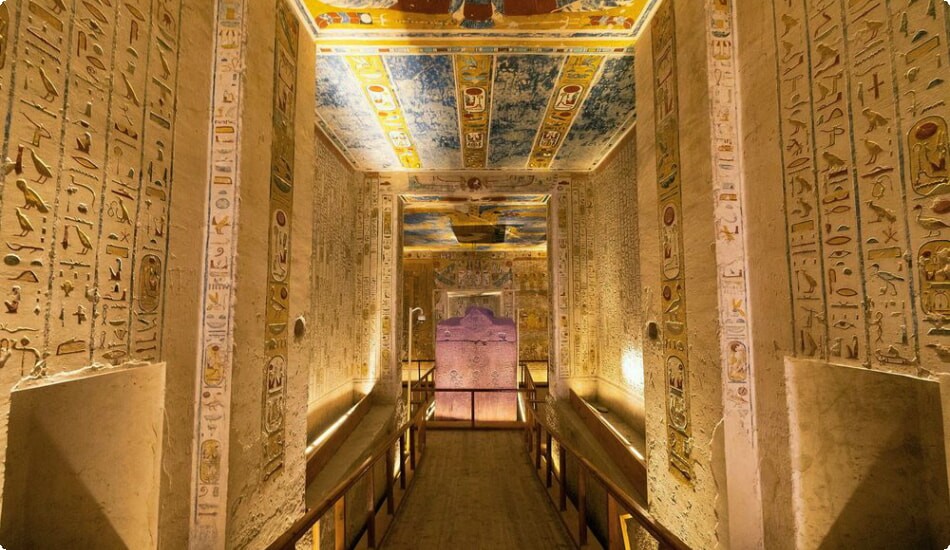
The Valley of the Queens:
A stone's throw away from the Valley of the Kings, this lesser-known burial ground holds its own allure. While its tombs might be smaller, they're no less significant. The highlight here is the tomb of Queen Nefertari, adorned with vibrant paintings that have survived millennia, bearing testament to the queen's esteemed place in history.
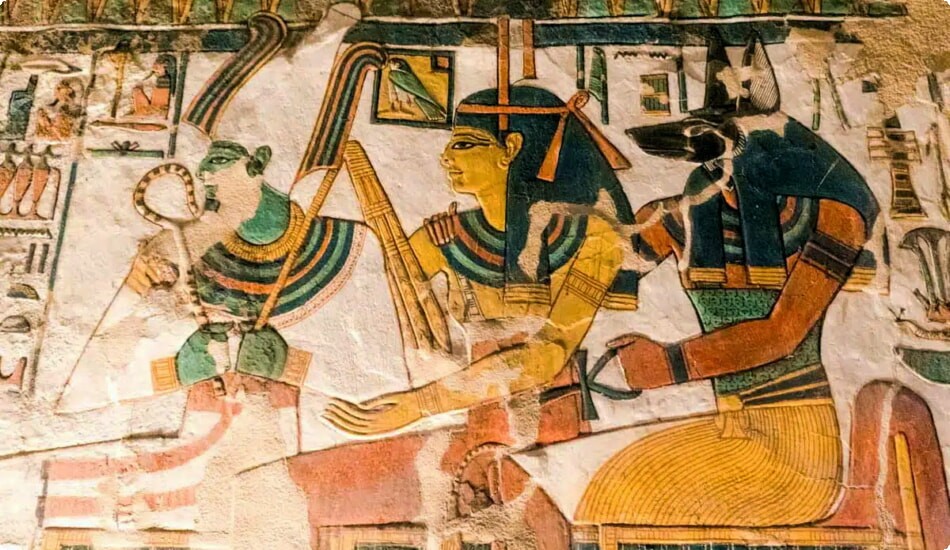
Temple of Hatshepsut – A Testament to a Powerful Queen
In the shadow of the Theban Mountains, a unique temple stands, not just for its architectural brilliance but also for the powerful story of its patron.
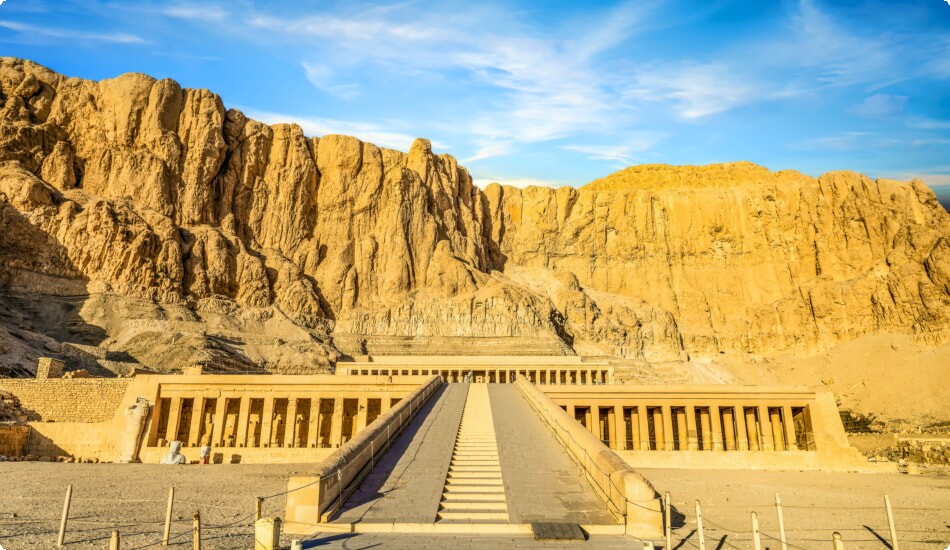
The Queen Who Would Be King:
Hatshepsut, whose name means "Foremost of Noble Ladies", wasn't just any queen; she was a pharaoh, one of the few women to ever hold that title in ancient Egypt. Her rise to power, in a male-dominated world, is a tale of ambition, strategy, and sheer will.
Architectural Elegance:
The temple dedicated to her, known as Djeser-Djeseru or "Holy of Holies", is a three-tiered marvel. With its sprawling terraces, tall limestone columns, and intricate carvings, it stands as a monument to Hatshepsut’s vision. Unlike other temples, it's almost one with the mountain behind, built into its rock face. The chapels dedicated to various gods, especially the ones for Hathor and Anubis, showcase the artistry of ancient craftsmen, with vivid paintings and reliefs illustrating the life and accomplishments of this groundbreaking ruler.
The Luxor Museum – Bridging the Past and the Present
In Luxor, where every stone and statue narrates tales of yesteryears, the Luxor Museum serves as a curated gateway to understanding this rich history.
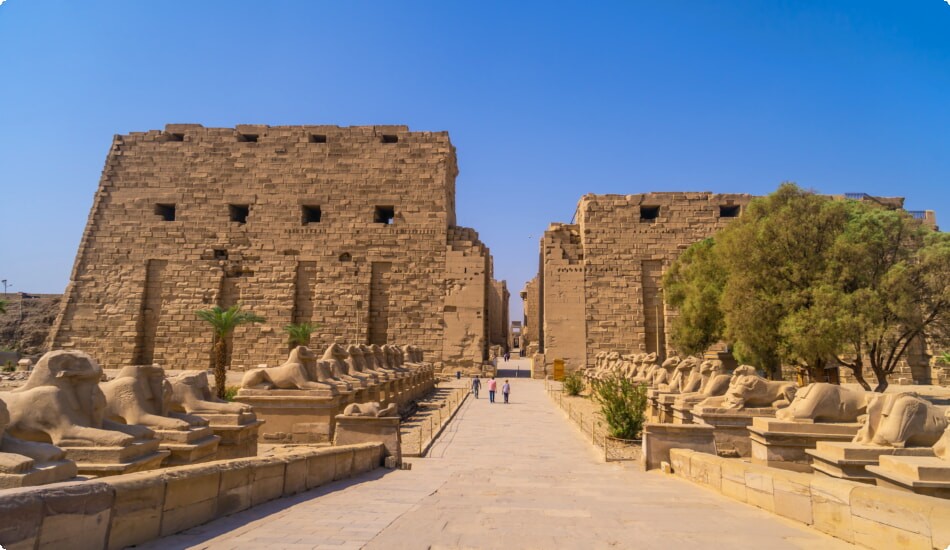
A Contemporary Glimpse of Antiquity:
While not as expansive as the Cairo Museum, Luxor Museum prides itself on quality. Housed within a modern building with ample natural light, this museum presents artifacts in a contextual and thematic manner. The design is intentional, allowing visitors to connect not just with the object, but with its story, its place in history.
Notable Exhibits:
Among the museum’s prized possessions are the statues from the Luxor Temple cache, including the majestic granite double statue of Sobek and Amenhotep III. Another highlight is the wall-relief from Akhenaten's temple, showcasing this controversial pharaoh’s shift to monotheism. Each exhibit, whether a grand statue or a modest tool, is a window into the world of ancient Thebans.
More than Just Artifacts:
Beyond the tangible items, the museum offers multimedia presentations and interactive displays. These modern additions make the ancient world more accessible, especially to younger visitors. It's an invitation to dive deeper, to question, to understand, and to marvel.
Travel Logistics from Hurghada to Luxor
Transitioning from the coastal serenity of Hurghada to Luxor's historic grandeur can feel like stepping into another era, but with the right logistics, it's a journey made in comfort.
Organized Tours:
For those seeking a hassle-free experience, considering an organized Luxor Trip by Hurghadalovers.com from Hurghada might be ideal. Benefits include:
- Guided Experience: Expert guides provide deeper insights into each site.
- Convenience: Transportation, meals, and entry fees are often bundled.
- Safety: Trusted operators ensure all aspects of the trip are secure.
Independent Travel:
Adventurous souls might prefer the flexibility of an independent trip. Key considerations are:
- Mode of Transport: Options include bus, private car hire, or domestic flights.
- Accommodation: Luxor offers a range of stays from luxurious Nile-side hotels to budget guesthouses.
- Itinerary Planning: Allocate sufficient time for each site, considering both prominence and personal interest.
Luxor's Local Delights
Beyond the monumental, Luxor offers everyday experiences that are equally enriching.
Souq Shopping:
Wander the bustling markets, where you can:
- Purchase traditional Egyptian souvenirs.
- Delight in local pastries and sweets.
- Experience the vibrancy of Luxorian daily life.
Felucca Rides on the Nile:
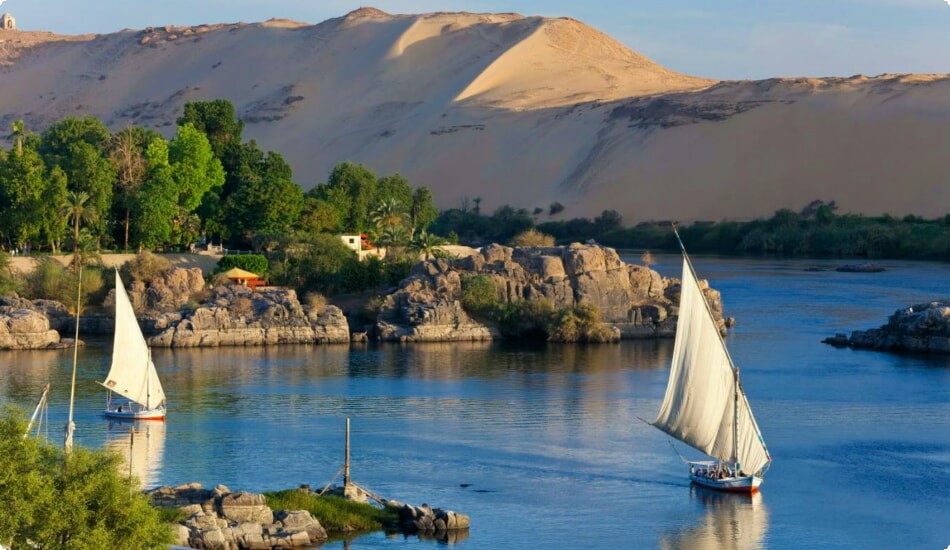
A gentle sail on the Nile in a traditional felucca boat offers:
- Stunning sunset views.
- A peaceful break from bustling city tours.
- An opportunity to learn about the river's significance from local boatmen.
Tips for a Fulfilling Luxor Experience
To ensure your visit is memorable for all the right reasons:
- Stay Hydrated: The desert climate can be deceptively draining.
- Dress Modestly: Respect local customs, especially when visiting sacred sites.
- Hire Licensed Guides: Their knowledge can immensely enhance the experience.
- Respect Artifacts: A touch can erode what has lasted millennia; always admire from a distance.
Luxor, with its temples and tombs, beckons not just as a historical site, but as a living testament to human ambition, reverence, and artistry. From Hurghada's shores to the heart of ancient Thebes, every traveler embarks on a personal journey – of discovery, reflection, and connection. Luxor, in all its grandeur and subtlety, stands timeless, waiting to etch its tales on the canvas of our memories.